Sardinia
| Sardegna Sardinia |
|||
| Flag | Coat of arms | ||
|
|||
| Location | |||
 |
|||
| Time zone | CET/CEST (UTC+1/+2) | ||
| Administration | |||
| Country | Italy | ||
| NUTS Region | ITG | ||
| Capital | Cagliari | ||
| President | (vacant) | ||
| Basic statistics | |||
| Area | 24,090 km² (9,301 sq mi) (Ranked 3rd, 8.0 %) |
||
| Population | 1,665,617 (12/2007) (Ranked 11th, 2.8 %) |
||
| - Density | 69 /km² (179 /sq mi) | ||
| Other information | |||
| GDP/ Nominal | € 32.5 billion (2006) | ||
| Website | www.regione.sardegna.it | ||
Sardinia (pronounced /sɑrˈdɪnɪə/; Italian: Sardegna; Sardinian: Sardigna or Sardinnya) is the second-largest island in the Mediterranean Sea (after Sicily). The area of Sardinia is 24,090 square kilometres (9,301 sq mi). The island is surrounded (clockwise from north) by the French island of Corsica, the Italian Peninsula, Tunisia and the Spanish Balearic Islands. Sardinia is a constitutional part of Italy, with a special statute of regional autonomy under the Italian Constitution.
Around the beginning of the nuragic age circa 1500 BC the island was first called in Greek, Hyknusa (Latinized Ichnusa) by the Mycenaeans, probably meaning island (nusa) of the Hyksos, the people who had just been expelled by Ahmose I of Egypt circa 1540 BC. Sandalyon was another greek name, probably due to its shape, resembling a footprint. Its present name is Sardinia, after the Shardana (whose invasion of Egypt was defeated by Ramesses III circa 1180 BC).
Contents |
History
Sardinia has been inhabited for many thousands of years. In 1979 human remains were found that were dated to the Paleolithic 150,000 BC. In 2004, in a cave in Logudoro, a human phalanx was found that was dated to circa 250,000 BC.
In prehistory the inhabitants of Sardinia developed a trade in obsidian, a volcanic glass used for the production of stone age tools, and this activity brought Sardinians into contact with most of the Mediterranean peoples. Dried grapes, recently found in several locations, have been DNA tested and proved to be the oldest grapes in the world, dating back to 1200 BC. The Cannonau wine is made from these grapes and may therefore qualify as the mother of all the European wines. Sardinia is the 2nd largest island in the Mediterranean Sea.
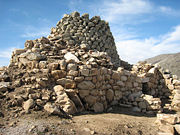
From Neolithic times until the Roman Empire, the Neuralgic civilisation developed on the island. There are still more than 9,000 Nuraghe extant. It is speculated that, along with other peoples, the Shardana people from the eastern Mediterranean settled in Sardinia. The Shardana had joined the Shekelesh and others to form the coalition of the Sea Peoples, but were defeated by Ramesses III around 1180 BC in Egypt. The Shardana and Shekelesh were also called by the Egyptians "the people from the faraway islands", suggesting that the Shardana were already resident on Sardinia at the time. This assertion may hold some truth; it has been claimed that most of the tombe dei giganti have a tombstone shaped like a ship vertically sunk into the ground, bearing witness to their seafaring activities. In truth, only those 'tombas' found in the north and middle of the island bear this feature, the southern examples bearing a definite Mycenaean style of architecture. Evidence of early trade and contact with other Mediterranean cultures exist; for example, fine ceramic products of ancient Cydonia on Crete have been found at Sardinian archaeological sites.[1] According to some linguistic studies, the town of Sardis (in Lydia) would have been the starting point from which they would have reached the Tyrrhenian Sea, dividing into what were to become the Sardinians and the Etruscans.
However most theories regarding the original population of Sardinia were formulated prior to genetics research and in the traditional framework of east-west movements. Genetic studies show that the population of Sardinia is quite distant from their neighbours. This is partially due to genetic drift due to isolation, though other reasons, such as ties with pre-Indo-European Neolithic peoples, may also have contributed to this distance.
The density, extensiveness, and sheer size of the architectural remains from the Neolithic period all point to a considerable population of the island. Early contact with Crete is indicated from archaeological recovery on Sardinia. Beginning around 1000 BC, Phoenician mariners established several ports of trade on the Sardinian coast. In 509 BC, war broke out between the native Nuragic people and the Phoenician settlers. The settlers called for help from Carthage (themselves ultimately Phoenician settlers) and the island became a province in the Carthaginian Empire (to this day, Sardinia's capital Cagliari is still nicknamed 'Kartago' or 'Carthage' by the Catalan population in northern Alghero). In 238 BC, after being defeated by the Roman Republic in the First Punic War, Carthage was forced to fight an uprising against former mercenaries who had not received their promised pay in a conflict known as the Mercenary War. Rome jumped at this opportunity to annex Corsica and Sardinia without resistance from the overstretched Carthaginians.
During the Roman period, the geographer Ptolemy noted that Sardinia was inhabited by the following peoples, from north to south: the Tibulati and the Corsi, the Coracenses, the Carenses and the Cunusitani, the Salcitani and the Lucuidonenses, the Æsaronenses, the Æchilenenses (also called Cornenses), the Rucensi, the Celsitani and the Corpicenses, the Scapitani and the Siculensi, the Neapolitani and the Valentini, as well as the Solcitani and the Noritani. Ptol. III, 3.

From 456 - 534, Sardinia was a part of the short-lived kingdom of the Vandals in North Africa, until it was reconquered by the Byzantine emperor Justinian I. During this time a coinsiderable number of Vandals settled on the island, traces of whose male I2b1 DNA can be found to this day. Also Iranian Alans arrived on the island. Under the Byzantines, the imperial representative was a judge who governed from the southern city of Caralis. Byzantine rule was practically nonexistent in the mountainous Barbagia region in the eastern part of the island, and an independent kingdom persisted there from the 6th to the 9th centuries.
Beginning in the 8th century, Arabs and Berbers began raiding Sardinia. After the Muslim conquest of Sicily in 832, the Byzantines were unable to effectively defend their most distant province, and the provincial judge assumed independent authority. To provide for local defence, he divided the island into four giudicati, Gallura, Logudoro, Arborea, and Caralis. By 900, these districts had become four independent monarchies. At various times, these fell under the sway of Genoa and Pisa. The town of Sassari proclaimed itself a free republic, allied to Genoa, in 1290. Following the 1297 grant by Pope Boniface VIII of the title of King of Sardinia and Corsica to James II of Aragon, in 1323 the Kingdom of Aragon began a campaign to conquer Sardinia, in alliance with the Arborea. After defeating Pisa and establishing a new monarchy called Kingdom of Sardinia among the crown (i.e. commonwealth) of Aragon in 1324, relations between the two allies became difficult and they fought each other for nearly a century; the Arborea successfully resisted the kingdom of Sardinia and for a time came to control the entire island but the cities of Cagliari and Alghero. However its last ruler William III of Narbonne, was eventually defeated by the Aragonese in the decisive Battle of Sanluri, June 30, 1409. The natives of the city of Alghero (S'Alighera in Sardinian, L'Alguer in Catalan) were expelled and the city repopulated by the Catalan invaders, whose descendants still speak Catalan. After the merging of the kingdoms of Castile and Aragon, Sardinia was incorporated into the newly created national entity, Spain. The kingdom of Sardinia had own political organisation, chiefly a parliament and a viceroy.
Under Spanish domination, Sardinians were regularly employed on the royal Spanish fleet. On October 7, in 1571, at the Battle of Lepanto, Sardinian mariners on board the admiral ship of Infante, Don John of Austria, half brother of Felipe II, boarded the Turkish admiral's ship, overpowered the crew, and beheaded a Turkish admiral . The sight of the admiral's head on a spear put such fear into the Turks that they abandoned the fight and surrendered completely to the Christians. This was the first time that the Turks lost a battle to Europeans, thus signaling a trend of military decline and defeats from which Turks never recovered.
In 1718, Sardinia became an 'independent' vassal kingdom under the House of Savoy, the rulers of Piedmont. In 1792, Jean-Paul Marat, son of a Sardinian father from Cagliari and a Swiss mother, was one of the triumvirate leading the French Revolution. In 1793, Sardinians rebelled, demanding autonomy in exchange for helping to defeat French invasion forces. Autonomy was granted within the united kingdom of Piedmont-Sardinia, but after the French threat to the kingdom lessened, the king reclaimed his authority. In 1847 the king, Carlo Alberto, after a request by the Sardinian parliament, ordered the perfect fusion between Sardinia and his other continental states, thus ending a five-century autonomy. In 1848 he granted a constitution, called statuto albertino, which lasted up to 1948 when Italy adopted the present republican constitution. In 1860, Vittorio Emanuele II, King of Sardinia became also the first king of a united Italy, after conquering the rest of the peninsula.
In 1948 Sardinia was granted a constitutional autonomy, with its own Regional Council, Government and President.
| Native name: Sardigna or Sardinnya | |
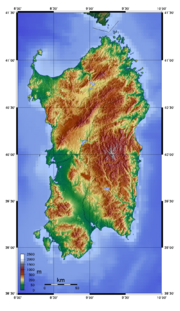 Topography of Sardinia |
|
| Geography | |
|---|---|
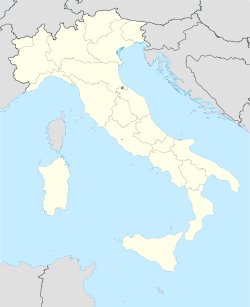 Sardinia (Italy)
|
|
| Location | Mediterranean Sea |
| Area | 24,090 km2 (9,300 sq mi) (48th) |
| Highest point | Punta La Marmora (1,834 m (6,020 ft)) |
| Country | |
| Region | Insular Italy |
| Largest city | Cagliari (160,000) |
| Demographics | |
| Population | 1,665,617 (as of 2007) |
| Density | 69.14 people/km2 |
Geography


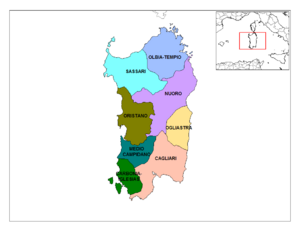
Sardinia is separated from Corsica by the Strait of Bonifacio.
Sardinia is a generally mountainous island with a few coastal plains. The island's mountains are divided into three ranges; the highest peaks are in the middle section of the island. Punta La Marmora in the Gennargentu mountain range, at 6,016 feet (1,834 m), is the highest point in Sardinia. Sardinia has few major rivers; the largest river on the island is the Tirso, which has a length of 94 miles (151 km) and flows into the Mediterranean Sea. The island has a Mediterranean climate, with hot, dry summers and very mild winters. The climate in the mountains tends to be wetter and cooler than the lower coastal plains; and winter snowfalls are not uncommon in the higher peaks. Sardinia also has more mountains than flat, low land and forests.
Until 2006, Sardinia had been divided into four provinces:
- Cagliari
- Nuoro
- Oristano
- Sassari
Now Sardinia is divided into eight provinces, following the creation of four more provinces just recently by the Sardinian regional government, becoming operative with the provinces' elections for the Presidents and the Councils held in 2006. The four additional provinces are as follows:
- Carbonia-Iglesias
- Medio Campidano
- Ogliastra
- Olbia-Tempio
Culture
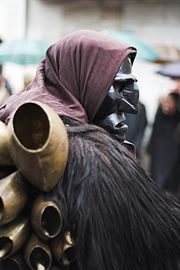
Sardinia is one of two Italian regions whose inhabitants have been recognised as a "popolo" (i.e. a distinct people) by a local statute (which is adopted with a constitutional law). The other region is Veneto (but this was not through a constitutional law).
Music
Sardinia is home to one of the oldest forms of vocal polyphony, generally known as cantu a tenore; several big names of music have found it irresistible, including Frank Zappa, Ornette Coleman and Peter Gabriel. The last travelled to the town of Bitti in the central mountainous region, and recorded the now world-famous Tenores di Bitti CD on his Realworld label. The guttural sounds produced in this form make a remarkable sound, similar to tuvan throat singing. Another polyphonic style of singing, more like the Corsican Paghjella and liturgic in nature, is also found in Sardinia and is known as cantu a cuncordu.
Another unique instrument is the launeddas. Three reed-canes (2 of them glued together with beeswax) producing distinctive harmonies, which have their roots many thousands of years ago, as demonstrated by the bronzette from Ittiri, of a man playing the 3 reed canes, dated to 2000 BC.
Beyond this, the tradition of cantu a chiterra (guitar songs) has its origins in town squares, when artists would compete against one another. Sardinian culture is alive and well, and young people are actively involved in their own music and dancing.
Sardinia has produced a number of notable musicians, such as Paolo Fresu and singer Elena Ledda. In 2004, legendary BBC presenter Andy Kershaw (presented Live Aid in 1985), travelled to the island with Sardinian music specialist Pablo Farba, and interviewed many artists. His programme can be heard on BBC Radio 3
The main opera house of the island is the Teatro Lirico in Cagliari.
Language
The most spoken language in Sardinia is, undoubtedly, Italian, but Sardinian is widely spoken too in the inner areas. Sardinian is a Romance language of Latin origin, influenced by Spanish and Catalan, but with an obscure Pre-Roman element, including Phoenician, Etruscan, and Near Eastern languages. While it has been significantly supplanted by Italian for official purposes, Sardinian is still widely spoken in most rural parts and, stemming from a long history of oral tradition, is used culturally for folk songs and poetry. As a literary language, it is gaining clout, despite heated debate about the lack of standard orthography and controversial proposed solutions to this problem. Recently, the regional administration has approved the use of Limba Sarda Comuna [1] in official documents.
In the city of Alghero in the north, a dialect of Catalan is spoken as the island was an Aragonese colony in the past. However, the two most widely spoken forms of the Sardinian languages are Campidanese, from the flatlands (Campidano) that cover most of the south (from Cagliari to Oristano), and Logudorese (Logudoro), from the central region, extending almost to Sassari.
Sport
Cagliari is also home to Cagliari Calcio F.C. that was founded in 1920 and plays in the Serie A, the Italian top division. It won the Italian Championship after the 1969/70 season, therefore becoming the first club in Southern Italy to reach such a result. Home matches are played at the "Stadio Sant' Elia", named after the area where it is located, with a capacity of 23,486. It was built in 1970 and refurbished before the Italia '90 football World Championships.
Sardinia also boasts a fine darts tradition, with many believing that the popular game in fact originated somewhere in the Sassari region of the country towards the end of the 15th century. In those days, the darts themselves were carved from Beech (Fagus) wood and the flights were feathers drawn from the indigenous Pollo Sultano, a bird famed for its spectacular violet-blue plumage. The early 21st century has seen one darts player in particular proudly continuing his nation's rich sporting heritage. Brett "The Sardinian" Welch, at 21-years-old, presents the island's greatest hope of one day becoming a world champion. With a current average of 101.4, and weighing in at 20 stones {280 pounds}, he is confident of qualifying for next year's BDO World Professional Darts Championship at the Lakeside.
Cagliari hosted a Formula 3000 race in 2002 and 2003 on a 2.414-km street circuit around Sant'Elia stadium. In 2003, also Renault F1's Jarno Trulli and former Ferrari's Jean Alesi did a spectacular exhibition. At the Grand Prix took part current BMW-F1 driver, Robert Kubica in a F.3 car, 'works' BMW WTCC Augusto Farfus, GP2's Fairuz Fauzy and Vitaly Petrov. Actually, Olbia hosts since 2004 the Rally d'Italia Sardegna, a rally competition in the FIA World Rally Championship schedule. The rally is held on narrow, twisty, sandy and bumpy mountainous roads around the glamorous town of Porto Cervo.
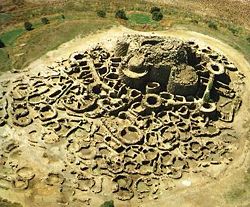
Porto Pollo north of Palau, is a bay often used by windsurfers and kitesurfers. The bay is divided by a thin tongue of land that separates it in an area for advanced and beginning/intermediate windsurfers. There is also a restricted area for kitesurfers. Many Italian freestyle surfers come to Porto Pollo for training and 2007 saw the finale of the freestyle pro kids Europe 2007 contest.
Because of a venturi-effect between Sardinia and Corsica, western wind accelerates between the islands and creates the wind that makes Porto Pollo popular amongst windsurfing enthusiasts. In 2005, Aglientu, hosted the Kitesurf World Cup in the Vignola's beach.
World Heritage Sites
Megalithic building structures called nuraghe are scattered in great number throughout Sardinia. Su Nuraxi di Barumini is a UNESCO World Heritage Site.[2]
Economy
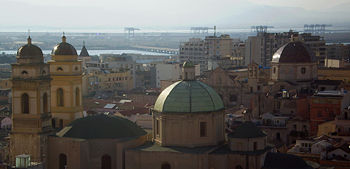
The Sardinian economy is today focused on tourism, mining, commerce, services, information technology, oil-refining and petrochemical industry; an increasing income is coming from its famous wines and gastronomy. The island is one of the main summer vacation spots of the European continent, containing numerous extraordinary tourist areas, Alghero, North West, with Capo Caccia astonishing cliffs and the famous Neptun Cave, and including the Costa Smeralda in the northwest, the mountanins of the Gennargentu in the center and the Gulfs of Cagliari and Oristano. The island is particularly famous for its beaches, but is also rich in other interesting places, such as some charming sea towns and archaeological ruins. See also: Tourist destinations of Sardinia. Saipem a contractor in the oil and gas industry and a subsidiary of Eni S.p.A, operates a shipyard on Sardinia. Their main activity is the fabrication of offshore oil rigs. Several gold and silver mines operate on the island.
Transport
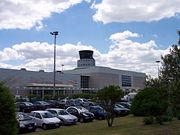
Trains in Sardinia connect the whole island but are rather slow. Some run on narrow gauge track. Many tourists catch the trenino verde which runs through the wildest parts of the island. It is slow but it allows the traveller to have scenic views impossible to see from the main road. The train connects Cagliari to Arbatax in the south and Sassari to Palau in the north. It is highly recommended to make the trip from Macomer to Bosa Marina where the train winds its way through the typical Sardinian scenery to reach the sea near the coastal town of Bosa situated in the west of the island.
Demographics
All Sardinia's major urban centres are located near the coasts, while the island's interior is very sparsely populated.
Cities and towns of Sardinia with a population of 25,000 or more:
| Comune | Province | Population (2008 est.) |
|---|---|---|
| Cagliari | Cagliari | 158,221 (metropolitan area 475,000) |
| Sassari | Sassari | 129,687 (metropolitan area 275,000) |
| Quartu Sant'Elena | Cagliari | 71,084 |
| Olbia | Olbia-Tempio | 53,501 |
| Alghero | Sassari | 42,497 |
| Nuoro | Nuoro | 36,678 |
| Oristano | Oristano | 32,932 |
| Carbonia | Carbonia-Iglesias | 30,447 |
| Iglesias | Carbonia-Iglesias | 28,170 |
Genetics
The original Nuraghe inhabitants of Sardinia, who are now concentrated in the interior of the island due to pressure from colonists, are a genetic anomaly in the region. They belong to Y-chromosome haplogroup I, which otherwise has high frequency only in Scandinavia and the Croatia-Bosnia area.
Furthermore, the I haplogroup of the indigenous Sardinians is of the I1b1b subtype, which is unique to the island. The I1b1b haplogroup also has a low distribution in and around the Pyrenees indicating some migration of Sardinians to or from that area. The Sardinian subtype is more closely related to the Croatian-Bosnian subtype than to the Scandinavian subtype. Sardinia also has a relatively high distribution of Y-chromosome haplogroup G, stemming from people that migrated to Sardinia from Anatolia . The Y-chromosome haplogroup G also has a relatively high concentration in and around the Pyrenees, again indicating migration of Sardinians to or from that area.
Environment

Sardinia is home to a wide variety of rare or uncommon animal and autochthonous plants and animals, such as the Mediterranean Monk Seal and the boar. Found only in Sardinia, Sicily and Maghreb, the Sardinian skink (genus Chalcides ocellatus) known more commonly as the Tiligugu, can reach 30 cm (12 in) in length, of which almost half is made up by the tail. Conversely, Sardinia lacks many common species such as the viper and the marmot, which are found everywhere else on the European continent. The island has also long been used for grazing flocks of indigenous Sardinian sheep. Sardinia has four endemic subspecies of birds which are found nowhere else in the world: its Great Spotted Woodpecker (ssp harterti), Great Tit (ssp ecki), Chaffinch (ssp sarda) and Eurasian Jay (ssp ichnusae). It also shares a further 10 endemic subspecies of bird with Corsica. The island's environment is improving due to strict environmental laws.
Natural Parks and Reserves
Sardinia has three National Parks:
- Archipelago of La Maddalena's National Park;
- Asinara National Park;
- Gennargentu National Park has been established on the eastern coast of Sardinia. It is home to animals such as the European wildcat.
Ten regional Parks:
- Parco naturale regionale di Porto Conte
- Parco regionale Molentargius - Saline
- Parco del Limbara
- Parco del Marghine e Goceano
- Parco del Sinis - Montiferru
- Parco del Monte Arci
- Parco della Giara di Gesturi
- Parco del Monte Linas - Oridda - Marganai
- Parco dei Sette Fratelli - Monte Genas
- Parco del Sulcis
60 wildlife reserves, 5 W.W.F oasis, 25 natural monuments.
See also
- Sardinian language: Sardu logudoresu, Sardu campidanesu, Gallurese, Sassarese
- History of Sardinia
- Tourist destinations of Sardinia
- List of Sardinians
- List of rulers of Sardinia
- Sardinian archaeological and artistic sites
- Tavolara Island, an island off Olbia, Sardinia, which is a self-proclaimed micronation
- Mal di Ventre, an island off Oristano, Sardinia, which is a self-proclaimed micronation
- Basilica di Saccargia
External links
- Official Sardinia Tourism website in English
- Official regional website in Italian
- Lighthouses of Sardinia
- Best Beaches in Sardinia
Line notes
References
- Stephen L. Dyson and Robert J. Rowland, Jr. Archaeology and History in Sardinia from the Stone Age to the Middle Ages. Shepherds, Sailors, and Conquerors (Philadelphia: The University of Pennsylvania Museum of Archaeology and Anthropology, 2008), Pp. viii, 240.
- C. Michael Hogan, Jan. 23, 2008, Cydonia, The Modern Antiquarian, [2]
- UNESCO World Heritage Site inscription data for Su Nuraxi di Barumini (2008) [3]

